Mel, you're with us again!
Printed From: Unofficial Allis
Category: Allis Chalmers
Forum Name: Construction and other equipment
Forum Description: everything else with orange (or yellow) paint
URL: https://www.allischalmers.com/forum/forum_posts.asp?TID=144948
Printed Date: 29 Nov 2025 at 1:04am
Software Version: Web Wiz Forums 11.10 - http://www.webwizforums.com
Topic: Mel, you're with us again!
Posted By: JohnCO
Subject: Mel, you're with us again!
Date Posted: 30 Nov 2017 at 1:43am
|
Good to see you posting. How is everything doing in your life? Did you and the Corp of Army guys get along OK. What's happening with the house, etc.? Inquiring minds need to know! ------------- "If at first you don't succeed, get a bigger hammer" Allis Express participant |
Replies:
Posted By: Ian Beale
Date Posted: 30 Nov 2017 at 3:32am
|
Mel A question. On that HD16 thread a while back you have photos of your Cozad trailer. How does that work? It looks like the gooseneck must be removable so you can load from the front? TIA |
Posted By: Garlic Pete
Date Posted: 30 Nov 2017 at 9:13am
|
Ian - I saw you ask that question before and saw the picture to which you're referring. I have a similar Cozad trailer and I can try to answer some for Mel. I'm sure he'll come in and correct as necessary. Most Cozad trailers, including mine and Mel's, have removable goosenecks and you do generally load over the front of the deck. The necks have two shackles on the front which are captive on pins sticking horizontally out the front of the neck down near where it meets the trailer deck. The shackles are oval shape affairs with two holes in them. They are about a foot and a half long, but about ten inches wide and made of inch thick or thicker steel. They have two holes, one centered on the top radius of the oval and one centered on the bottom radius. The top hole of the shackle hangs on a pin welded to the front of the neck. That pin is long enough for the shackle to slide forward a few inches and has a bracket welded to keep the shackle captive on the pin. When the neck is sitting on the deck, the shackle hangs below the neck far enough that the bottom hole in the shackle can engage a stubby pin which protrudes from the front of the trailer deck. The two shackles, one on each frame of the neck, provide two points of contact with the trailer. A stinger sticking out from the rear center of the neck has a small hole which goes in a slot in the trailer deck, engaging with a horizontal, spring loaded pin in the trailer deck. That stinger provides a third point of contact between the neck and the trailer deck. I'll take pictures and some video over the weekend of the structures and the connection and disconnection process and post them here next week. The process to disconnect the trailer is: 1. Remove the conventional trailer air and electrical lines. 2. Pull the fifth wheel pin. 3. Move the truck tractor forward, allowing the trailer neck to roll down the ramps which are mounted on the rear of the truck until the trailer deck is resting on the ground. 4. Move the shackles forward on their pins so they are disengaged from the trailer deck pins. 5. Disconnect the air and electrical lines which connect the neck to the trailer deck. 6. Pull the spring loaded stinger pin unlatch so that the stinger pin will retract when the neck is picked up by the truck. 7. Back the truck tractor up so that the neck rollers roll back up the ramps on the tractor frame and the king pin is engaged in the fifth wheel. This step results in the neck hinging up from the trailer deck, while the stinger remains laying in it's channel on the trailer deck. The spring loaded horizontal pin will have retracted from the hole in the stinger at this point as soon as the truck picked the neck up and gravity wasn't prying on the pin any more. 8. Put some blocks or spacers between the truck frame rails and the neck frame rails so that when pulled away it doesn't fall and drag on the ground. 9. Pull the truck tractor away from the trailer deck, allowing open access for loading to the front of the trailer deck. To connect, reverse the process backward up the numbers above. It probably isn't easy to visualize all this from words, so I'll provide the equivalent of thousands of words next week in the form of pictures and videos. Pete.
|
Posted By: AC Mel
Date Posted: 30 Nov 2017 at 10:30am
|
Ok...been following along...just haven't had enough time to ad more posts. John..still waiting for cleanup...did meet 2 days ago with the Army Corp. Clean up could start any day. Usually takes 3-4 days per site. I think there are about 20 crews doing these sites. Each crew has 1 excavator, 1 skid steer with grapple forks,1water truck or water trailer. 2 portable light towers,2 laborers. Dump trucks (super dumps) line up in down town Redwood Valley each morning and are dispatched as needed to whatever address. I'm planning on posting that event when it happens. Ian...Yes Pete has a handle on that...pictures and video will be great! I think I have a post somewhere on one of our pickups showing that break down....not sure where though. |
Posted By: shameless dude
Date Posted: 30 Nov 2017 at 2:31pm
| whew....sure glad to see you back on here Mel! |
Posted By: Ian Beale
Date Posted: 30 Nov 2017 at 3:46pm
|
Pete and Mel Thanks. We've never heard of anything like this in our part of Oz. |
Posted By: HD6GTOM
Date Posted: 30 Nov 2017 at 6:36pm
| Gots our fingers crossed for ya Mel. Good luck with everything! |
Posted By: AC Mel
Date Posted: 03 Dec 2017 at 10:43pm
Ok...we went and retrieved our HD11B grapple tractor from our friend who rented it last year to log with. He was done and we thought it was our best option to open roads after the fire. This past Thursday I hauled it about 3 miles up hill to the top of the ranch to start work. The plan was....if we could get to the top with the lowbed we would walk the 7G loader which was about a mile away...and had survived the fire up to the lowbed and haul back down the hill. The other part of the plan was to get the burned wheels off the grader to bring down to replace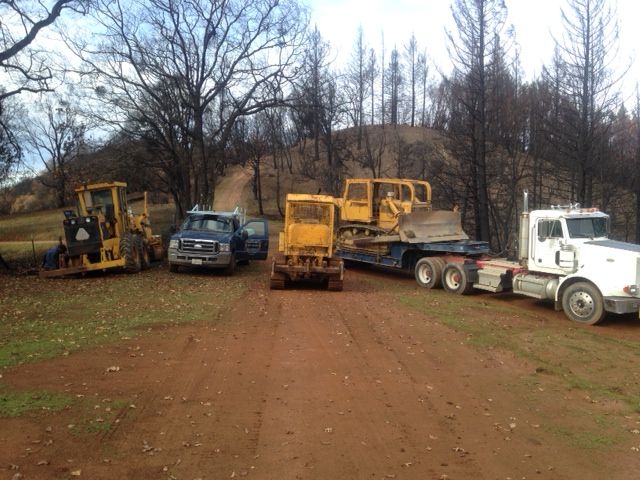 So the uphill went well and the 7G started and cooperated too. Brannen..with the help of AC HOOTIE..got the wheels of the grader. It was resting on the ground ..left one lug nut on.. started the grader raised it up with the blade and took the other ones off..and the wheels. Insurance is covering the tires and other repairs...it runs ok and most everything else is salvageable. 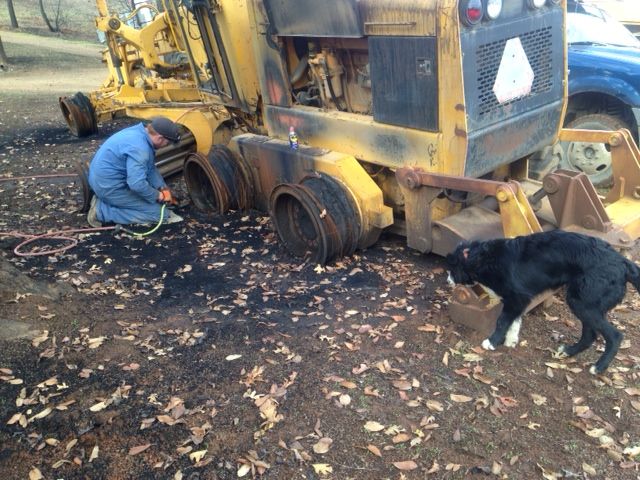 That went well...so we unloaded the grapple tractor.   Got the lowbed turned around. 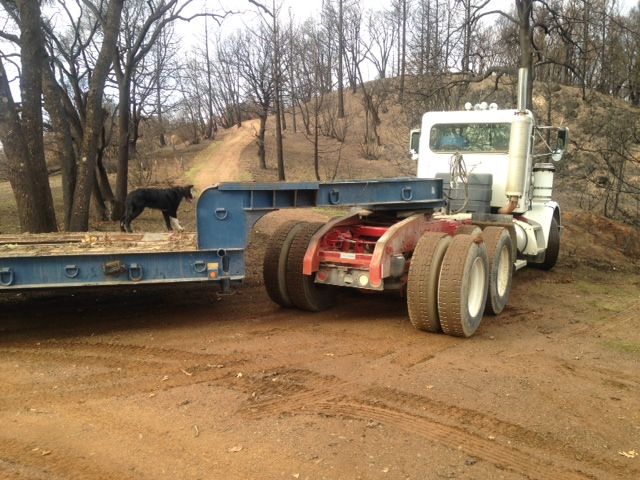 Loaded the 7G and went down the hill. 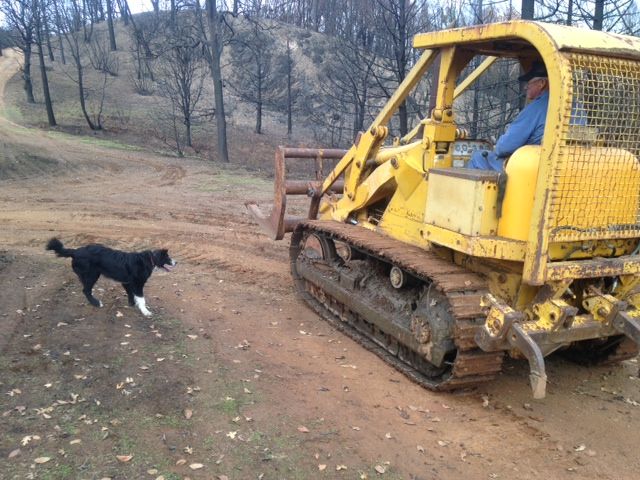 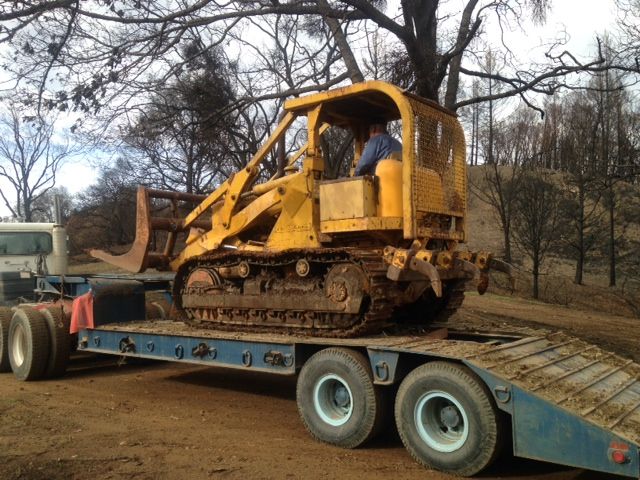 So today I went up to open roads and checked out some burned timber.  We got some real moon scape here. 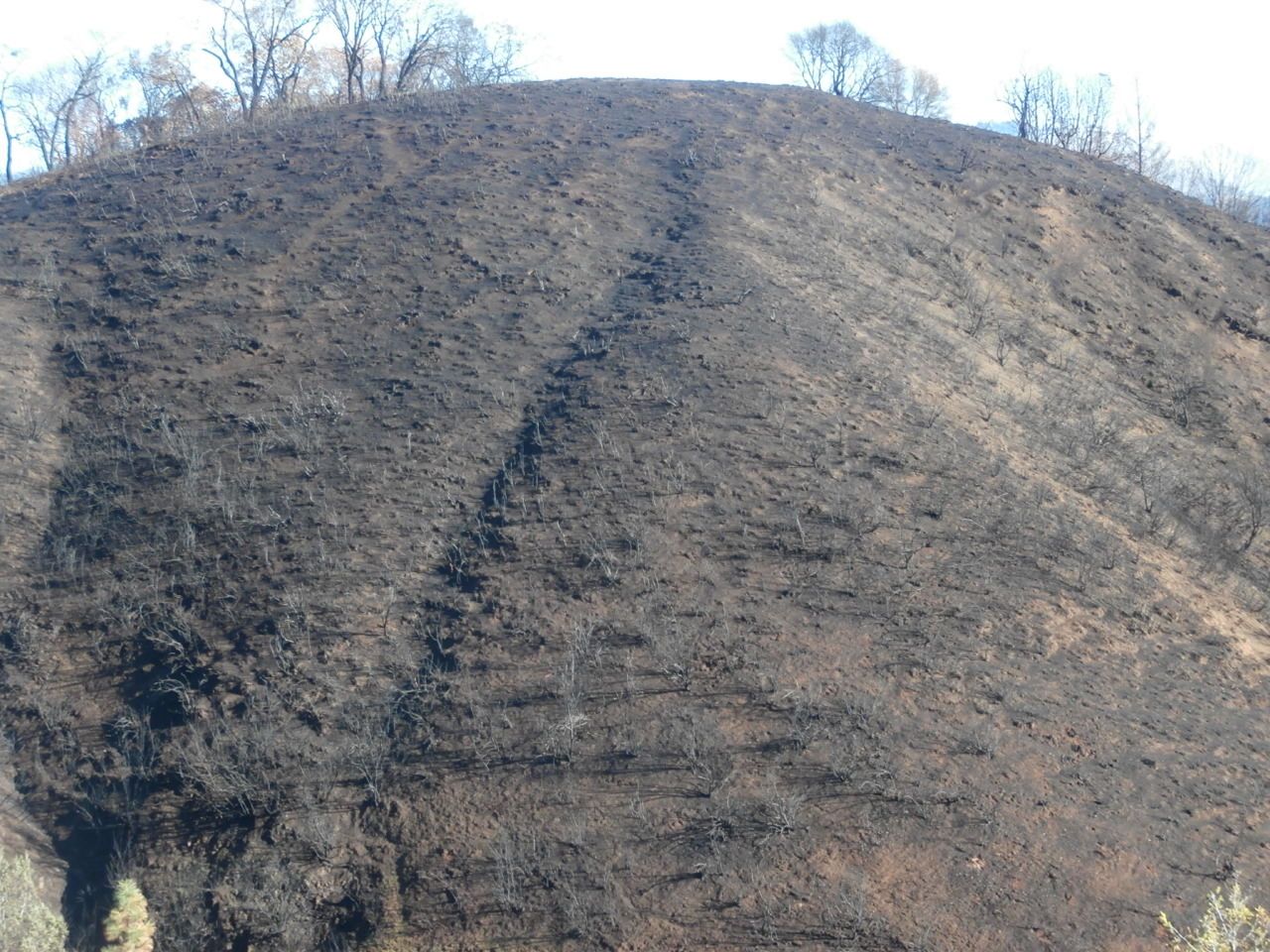 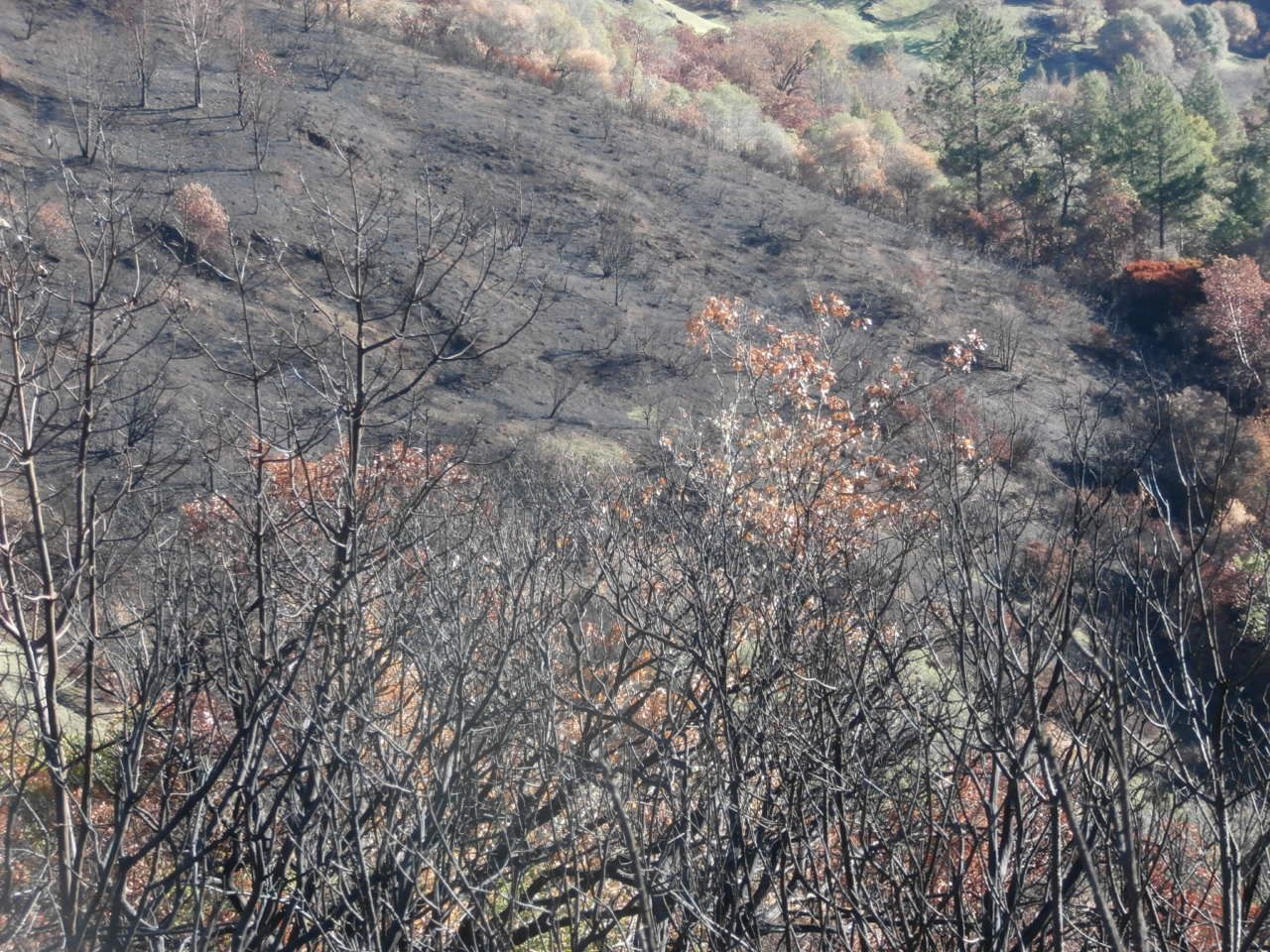 So these are some of the burned trees that closed all roads..to many and to big just to ride around on a 4wheeler with a chain saw...some can just be pushed over...some were easier to move with the grapple.  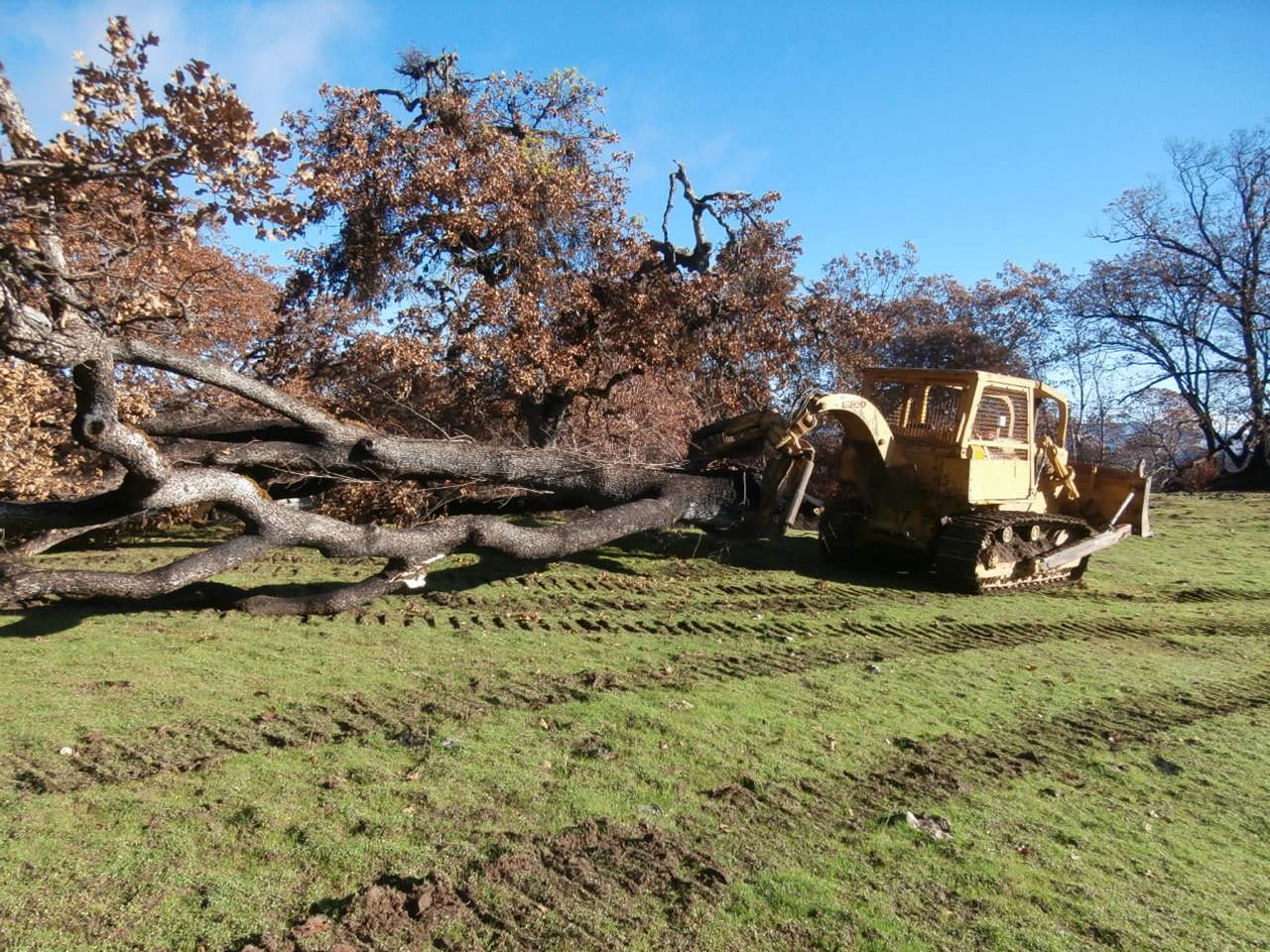 Moved 32 trees or pieces in about 4 miles...some were just pieces that could probably been moved buy hand. (but I'm a tractor guy) 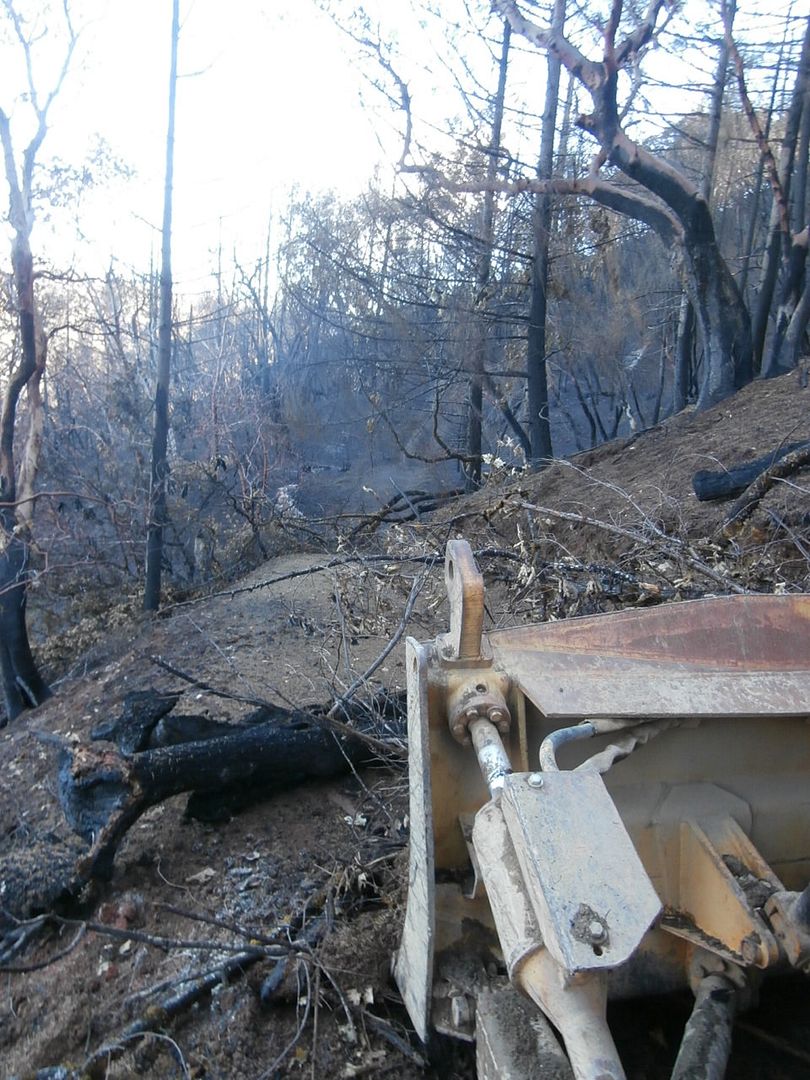 We are trying to get into some areas to see if we have enough timber to warrant logging. 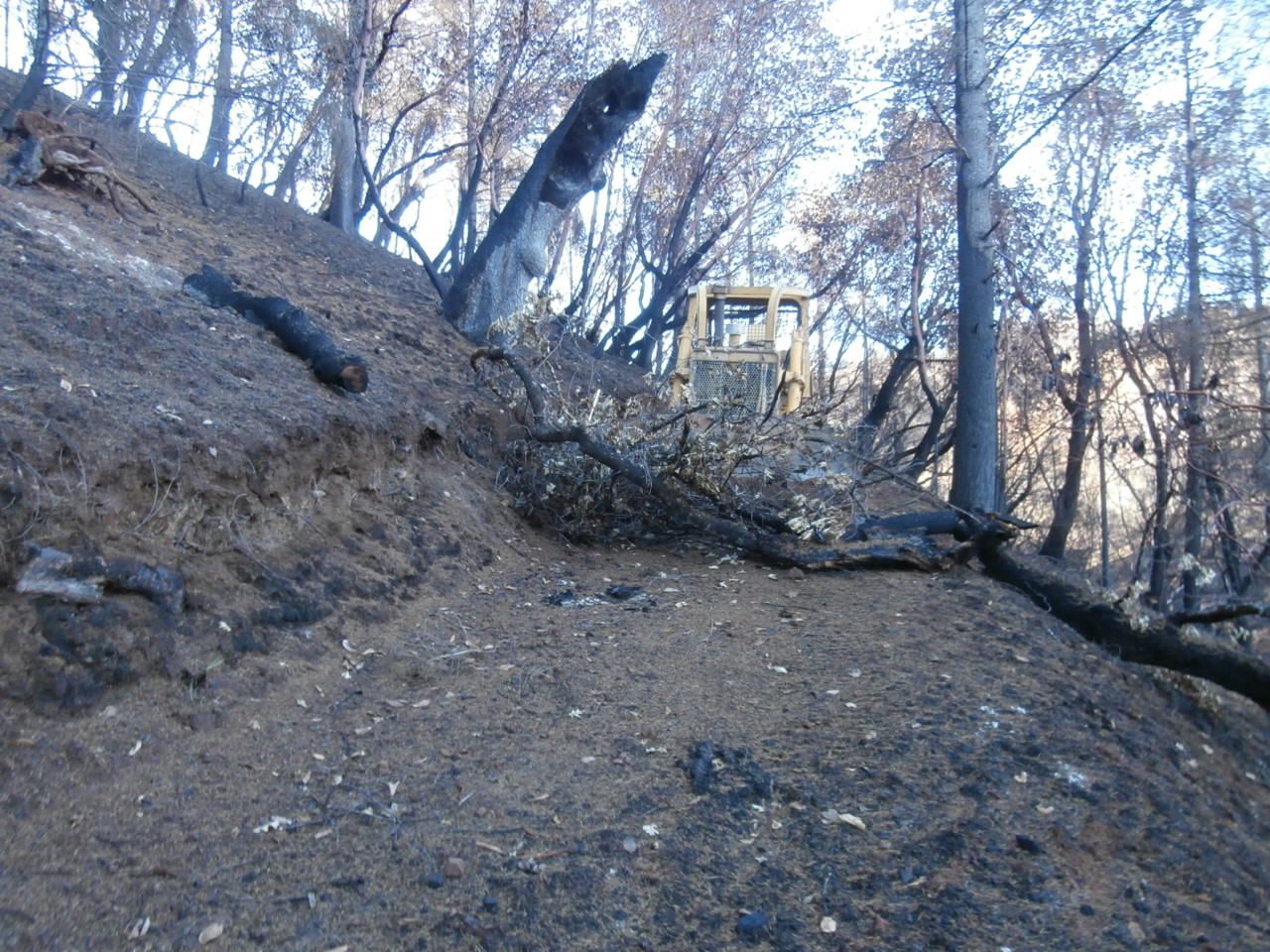 These areas were aerial seeded last week.  The seed is pretty easy to see when you are standing here...sub clovers...rye..orchard grass 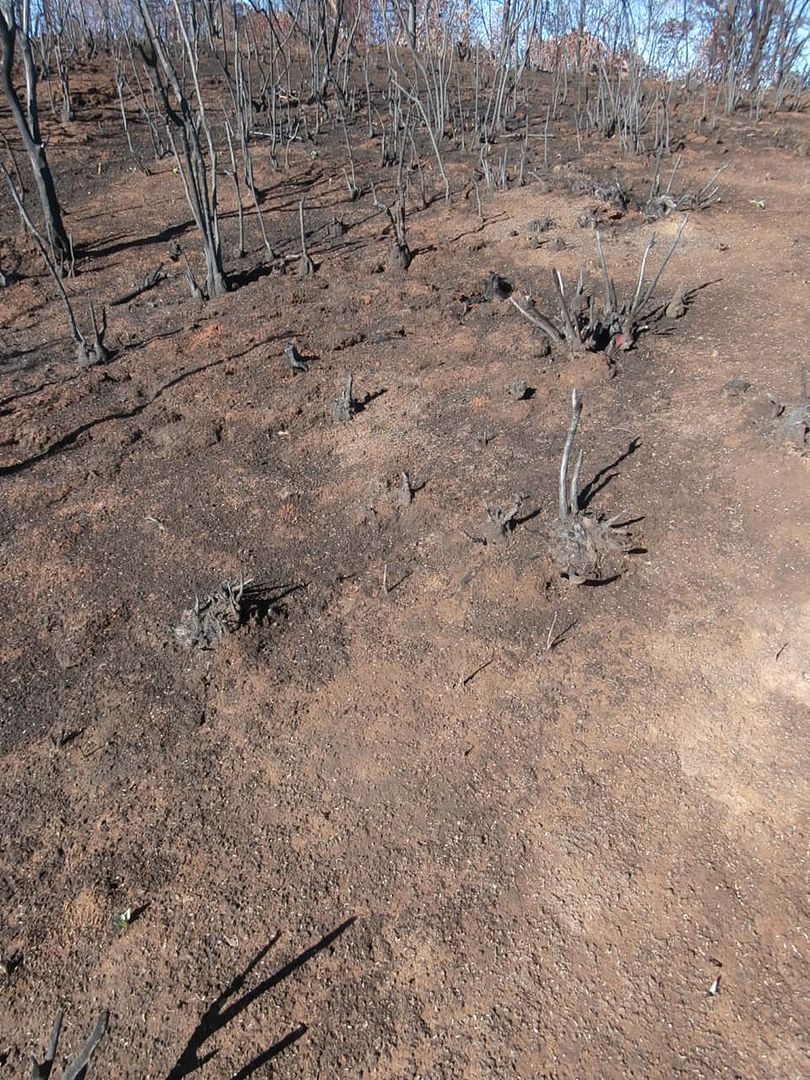 Got a lot more ground to cover....not enough hours in the day |
Posted By: DMiller
Date Posted: 04 Dec 2017 at 5:49am
|
Only word I can find DAMN! |
Posted By: LeonR2013
Date Posted: 04 Dec 2017 at 8:40am
| Might be a good time to look for some gold. |
Posted By: Garlic Pete
Date Posted: 04 Dec 2017 at 9:45am
|
AC Mel - I'm sorry to see your trouble, but gratified to see how you're handling it. A good friend of ours has 20 crews and over 100 pieces of equipment contracted to the Corps of Engineers helping with that cleanup. You all, including those contractors, have to deal with the government red tape. I'm glad to see that all are finding a way to work around that and really get the right things done. Ian - I ran out of time to get videos and photos of the connection and disconnection process, but at least here are some photos of the equipment with some descriptions. Next weekend I should have more time and will come back with more photos, video and information. Here is the neck, hanging on the truck as disconnected. Note the ramps which are bolted to the frame rails and the bits of wood supporting the neck, about halfway between the fifth wheel and the end of the frame. https://postimg.org/image/evt23fn3l/" rel="nofollow">  Here is a detail of the ramps and you can see the wood. https://postimg.org/image/97mrclnwx/" rel="nofollow">  Here is a detail of the lines for connecting the ramp to the trailer deck. You can also see the shackles, in the forward position and the U-shaped locks which keep the shackles from moving around. https://postimg.org/image/lm9jcxn4x/" rel="nofollow">  A couple angles with better detail on the shackles and locks. https://postimg.org/image/5b9fglnht/" rel="nofollow">  https://postimg.org/image/4yi1aexi9/" rel="nofollow">  Here are a couple views from the rear showing the stinger which sticks out the back and engages the horizontal lock pin. https://postimg.org/image/nqtwdzegx/" rel="nofollow">  https://postimg.org/image/xbdj0vyo1/" rel="nofollow">  Here is the trailer deck, disconnected and laying on the ground, ready for loading. https://postimg.org/image/732ebj1pt/" rel="nofollow">  Here is a closeup of the front of the trailer. Note the two big pins sticking out the front, which the shackles engage, and the funnel and slot where the stinger slides in to engage the horizontal lock pin. Sorry, this one came out a bit blurry. https://postimg.org/image/7sl6nuryp/" rel="nofollow">  Here's a closer view of the front stuff, with the better view of the air and electrical connections from the neck to the deck. https://postimg.org/image/4yi1ag7sx/" rel="nofollow">  And here's a closer view of the stinger lock. https://postimg.org/image/v6t5zuf1t/" rel="nofollow">  Inside this hole is the lock chain which releases or allows the stinger lock to engage. https://postimg.org/image/jhp6bv8nl/" rel="nofollow">  The stinger lock has a small, light spring which pushes it towards the hole. It also has a little latch which the stinger hits, releasing allowing the light spring to push the pin through the stinger when it engages. The T-handle and chain pictured are attached to a heavy spring which pulls the stinger out away from the hole. When the neck is sitting on the trailer, resting on the ground, the stinger lock pin has a strong bind on it. You can pull the T-handle out, applying strong spring pressure to the lock pin, but not enough to overcome the bind. When you have removed the shackles and backed the truck tractor up to the neck, the moment the neck begins to roll up the frame ramps, weight is taken off the lock pin and the spring pulls the pin out of the hole in the stinger. At that point, you're neck is disengaged. When reconnecting, the T-handle is relaxed, releasing the heavy retracting spring pressure and allowing the pin to rest against the lock. When the stinger is backed into the slot, it unlatches the pin and when the truck rolls slightly forward, the lock pin pops through the stinger hole, making the neck captive to the deck, so the kingpin can be pulled and the truck moved out from under the neck. All Cozad drivers can tell you about their experience learning to connect and disconnect a Cozad. When learning and trying to remove the neck, the tendency is to be gentle and tentative. This means new drivers will back up to the neck carefully and gently. The truck and ramps will contact the neck, slightly lifting it and the lock pin will pop out. At that point, if they let the truck roll slightly forward, the neck usually falls on the ground. If you have a forklift or loader around, it is no big deal, just pick it up, latch it to the fifth wheel and you're going. In the situations that I work with, we're usually recovering a dead machine in the middle of nowhere, with no lifting devices or anything. When we first bought this trailer, I had never used a Cozad before. I've probably dropped that neck thirty times, only a few when a forklift, loader or backhoe was around. I know all the tricks to use the truck to lift it with chains, use chains and binders to the neck to lift it, use the truck pulling around the back to get it lined up, etc. It can be a lot of work and use a lot of time if you drop that neck in the wrong place without anything to lift with. The experienced Cozad guys know to back up gently, get all lined up, make sure everything is perfect, then when you're 6 inches to a foot from it, drop that clutch and get under it positively! Once you're under, release the clutch so you don't bang into the kingpin and abuse your pin and fifth wheel. I'm usually pretty good with it now and haven't dropped the neck for a while. I'm sure I still have four or five neck drops in me, though. Hope this is helpful. I'll try for action shots in a week. Pete.
|
Posted By: Ian Beale
Date Posted: 04 Dec 2017 at 4:06pm
|
Posted By: JohnCO
Date Posted: 04 Dec 2017 at 9:32pm
|
I'm amazed that the tires burned off one side of the blade but didn't get the entire machine on fire. Did someone get some water on it before it all went up or were you just really lucky? ------------- "If at first you don't succeed, get a bigger hammer" Allis Express participant |
Posted By: AC Mel
Date Posted: 04 Dec 2017 at 11:02pm
| Just really lucky....in the summer we intentionally park equipment in areas we think are fire safe...for a normal fire this would have been safe....same for the7G....for this firestorm...have no idea how either one survived yep...just real lucky |
Posted By: michale34
Date Posted: 05 Dec 2017 at 1:06pm
| My brother in law had a jd 550 that was parked out in a pasture on the woods line .He was going to start pushing up a pond . he had just moved it there on a Friday and start the job on monday. A woods fire burnt the pasture that weekend and burned all around and under the dozer but didn't hurt a thing just smoke covered. but the rancher had a gooseneck trailer 50 yards away that was just a frame left. . I guess luck was on his side that day. |
 Garlic Pete wrote:
Garlic Pete wrote: